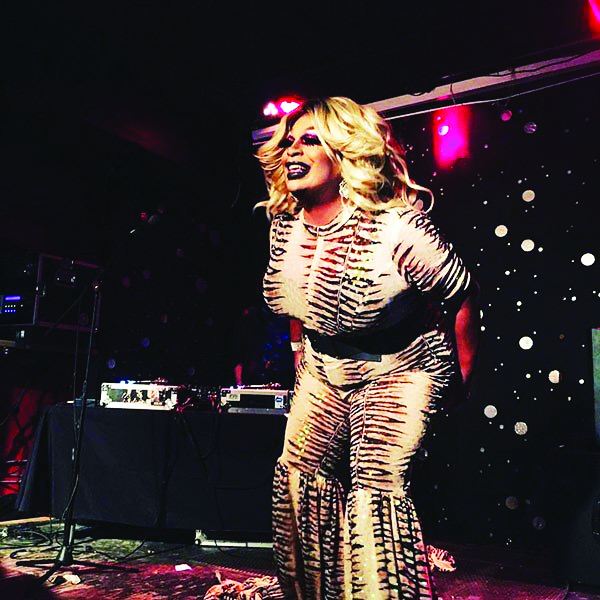
By Jada Jackson
Queens, N.Y.
“It was a lip-syncing competition, and everyone dared me to go as Macy Gray … basically with my natural hair, I like tied it back, I shaved, and I went out there and I performed the song called ‘I Try.’ And I got second place out of ten acts as a solo performer, lip-synching a boring song, and I really made it work.”
This was the first time Vivica C. Coxx was able to dip her toes into the glorious and liberating world of drag. The drag queen and drag house matriarch had her first show at just 17 years old in her high school, North Carolina School of Science and Mathematics. This was the moment that Coxx was launched into a community full of love. Coxx was granted an opportunity of a lifetime. “[O]ne day I was sitting in an establishment, a bar. On my way to go… the owner of the establishment asked me if I knew any local queens who could open from Manila Luzon from RuPaul’s drag race. I’m over here with 10 years of amateur experience, I’m bold, why not say I can do it. They asked to see some pictures of me, I showed them a photo from Halloween … They said let’s do it … It was like this perfect storm for someone to step up. And I did.” The crowd loved her. She exceeded everyone’s expectations, including her own. “There’s this moment from that night, where you see that I realized this is what I was supposed to do.” That’s what the Drag community is about—freedom and self-expression.
Gay Bars like Roscoe’s Tavern, which opened on April 1, 1987. It was one of the first in Boystown, Chicago which helped create an LGBTQ neighborhood on the Northside of Chicago. At the time, it was rare to find a place where LG-BTQ people could be them-selves in public. Roscoe’s was bold to keep windows open to the streets. Today this isn’t important but at the time, “every other business was known for having their windows bro-ken out on the regular,” said Shawn Hazen, the Marketing & Special Events Manager for Roscoe’s Tavern. “When we started 30 plus years ago … we wanted people to be encouraged to you know … feel comfortable being an out queer person.” Roscoe’s was a place where people would feel safe to enjoy themselves.
Bars like Roscoe’s have been a refuge for Queer people for generations. It was a spiritual rejuvenation session. “[D]rag is church. A lot of people, they go to church … You go on Sunday, and you get your soul filled,” Coxx says to explain what drag is. Drag queens are the beacons of light for many in the darkness that this harsh world has created for those in the LGBTQ community.
That’s how it was before COVID-19 shut everything down. Without places to host drag shows, queens got creative. They weren’t discouraged by the pandemic, Coxx said, “for most drag performers everything didn’t fully shut down … I actually per-formed a lot during the pandemic, all from the comfort of my home.” Coxx enjoyed being able to put on a show without the physical constraints of a corset, heels, and foam padding. She embraced the change of scenery with her natural flair and extravagance.
“However, there were times where I would be performing in my room and it was completely silent. I didn’t know if they were enjoying it … Could you imagine that?” Coxx asked. It changed what drag was about. The sense of family was left in the chat, no longer was she on a big stage with bright lights, where she felt, “this is home.” Now she was actually alone.
“COVID-19 was a very isolating experience … I spent a year and a half basically alone.” Despite it all, she survived and is still flourishing. Coxx recently performed her first in-person drag show performing as if everything was never shut down. Coxx, like many drag queens, and bars like Roscoe’s Tavern, adapted to the situation and were able to make it through. The community built before COVID was one of family, togetherness, and love for each other. That community has shown that it will remain whether virtually or in-person for years to come.



